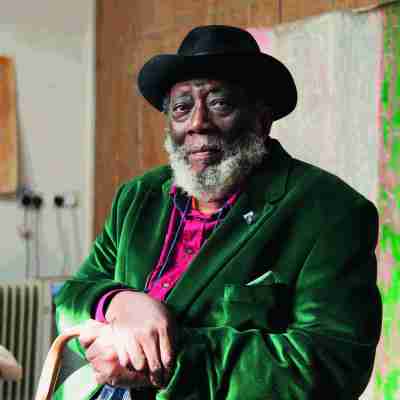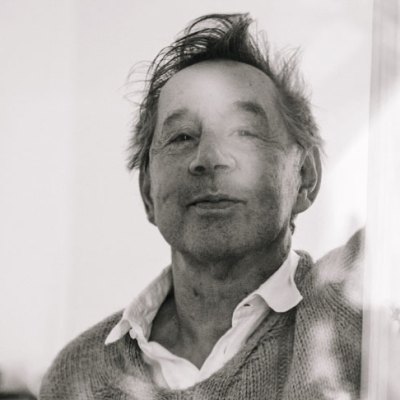The renowned Hong Kong businessman Sir David Tang has died at the age of 63. Tang was well known as an entrepreneur, a socialite, and a columnist for the Financial Times; he was also a leading art collector and patron of the arts in Hong Kong and London. He was the chairman of China Exchange, London, a trustee of the Royal Academy of Arts, and had been chairman of the Tate’s Asia-Pacific Acquisitions Committee, and was a longstanding supporter of music organisations including the London Symphony Orchestra. In July 2008, he spoke to Susan Moore for Apollo, discussing his collection at home in Hong Kong and ‘dashing off a Messiaen impromptu and a bit of Bach (W.F.)’ for his interviewer. Extracts from that interview are republished below.
*
Climbing the grand spiralling staircase of the China Club in Hong Kong is like drawing a cork on the history of modern and contemporary Chinese painting. Every wall of this elegant three-storey stairwell at the top of the former Bank of China building is hung cheek-by-jowl with 20th-century works of art. Lining the lower levels are academic paintings in the newly introduced technique of western oil painting – portraits, figure studies, landscapes, still lifes. Climb further and these familiar, conventional images give way to the bold, iconoclastic works of the post-Tian’anmen Chinese avant-garde. […]
The journey continues through the club’s labyrinth of corridors, bars and private dining rooms with ink paintings and oils, photography and prints punctuated by witty juxtapositions of sculpture. It concludes back at the foot of the stairs, at the final flourish of the bannister rail, with a large, round full stop in the form of one of Liu Jianhua’s enormous circular polychrome porcelain dishes. Inside it, five long-legged but headless and armless female figures clad in traditional Chinese silk cheongsams sit or lie prostrate. This stereotypical Chinese exoticism is served up with added humour: the piece is transformed into a fish bowl, and unheeding goldfish swim around the gleaming porcelain legs and torsos. It is clear that Sir David Tang, the China Club’s creator, is an unusually wide-ranging, highly eclectic collector, and that he enjoys art enormously.
What visitors may not realise is the role played by this pioneering collection, which Sir David began to put together in 1990. The China Club offered a high-profile exhibition space at a time when there were very few galleries in Hong Kong or on the mainland – and certainly no auction-houses – interested in showing new-wave Chinese contemporary art. Moreover, Sir David’s passion for this art had ramifications far beyond Hong Kong. Working in association with the curator and gallerist Tsong-zung Chang, he has played a major part in introducing it to an international audience and promoting it through a series of touring exhibitions, biennials and triennials.
We meet not at the China Club but in his apartment off the Old Peak Road. Since the ban on smoking in offices was introduced in Hong Kong, it is the place this inveterate cigar-smoker prefers to work. Here, and perhaps only appropriately for a Hong Kong Chinese educated at both school and university level in the UK and now married to an English wife, Lucy, Western – and predominantly British – modern and contemporary painting joins Asian contemporary. After lunch in a dining room lined with Keith Tysons, presided over by Roman busts of philosophers (Sir David had a brief spell teaching philosophy at Beijing University) and with works of art stacked against every wall, he moves off, signature Punch double Corona in hand, to the Steinway to dash off a Messiaen impromptu and a bit of Bach (W.F.).
Behind him, Julian Schnabel’s Fox Farm – inscribed ‘There is no place more horrible than a fox farm during pelting season’ – shares a wall with the Taiwanese Cheng Tsai-tung’s painting of his mother with a cat. Opposite, Picasso hangs above David Piper and next to one of Park Min Joon’s monumental, Korean-inhabited renaissance-style mythologies. Across the room, Augustus John is flanked by Stephen Conroy and Jack Vettriano, and in the hall paintings by the Birley clan – Sir Oswald and granddaughter India Jane – keep company with Howard Morgan. Sir David even had a shelf built in his bathroom so that he could look at art while in the shower. ‘Collecting art has become an obsession,’ he admits, ‘and an obsession I tend to be rather reckless about.’
‘My family had no interest in art, but collecting is in my genes’, he explains. ‘My grandfather collected porcelain dalmatians; my father racehorses. During my first holiday in Hong Kong after I went to boarding school my aunt took me to the first solo show in Hong Kong of Zhang Daqian because everyone was talking about it. I thought it was amazing. He was the first Chinese artist to bring a sense of revolution to traditional ink painting. He still used ink and scroll but he brought colour – an amazing blue, magenta, green. Suddenly there was perspective too, three-dimensions.’
‘Many years later I was able to afford to buy something by him, and it hangs over my bed now. I had just seen the Glenn Miller film with James Stewart – Miller bought his trombone by instalment. That is exactly what I asked to do. After a few months, I proudly brought the painting home and I spent a lot of time deciding how to mount it and frame it, and finding the right space for it. It was then I realised that this was something I wanted to do.’ […]
It is clear that Sir David is passionate about the works of art he has collected. He was involved in their framing, and organises their rehanging. ‘I go out of my way to change some of the art and the artefacts in the club every month or so,’ he smiles. ‘It is very endearing to me when members remark about a new picture.’ Given his bursting storage spaces and manic schedule – which also involves serving as a trustee of the Royal Academy of Arts in London, as the chairman of the Asia-Pacific Acquisitions Committee at Tate, director of the Asian Art Archive in Hong Kong and patron of the new Art HK fair (he was knighted this year for his services to charity), I ask him if he is still collecting. He looks at me as if I have asked the most stupid question he has ever heard. ‘Of course you have to keep buying, keep weeding out the ones you no longer like.’ In fact, he sells very rarely.
As if to illustrate the point, we leave the apartment to collect Chang from his Hanart TZ Gallery, where Sir David finalises the purchase of his latest acquisition, The Best of Time, painted last year by Gang Zhao, the youngest of the artists of the famous Stars Group. We then set off to a less glamorous side of Hong Kong in pursuit of a large art warehouse for his ever-expanding collection.


